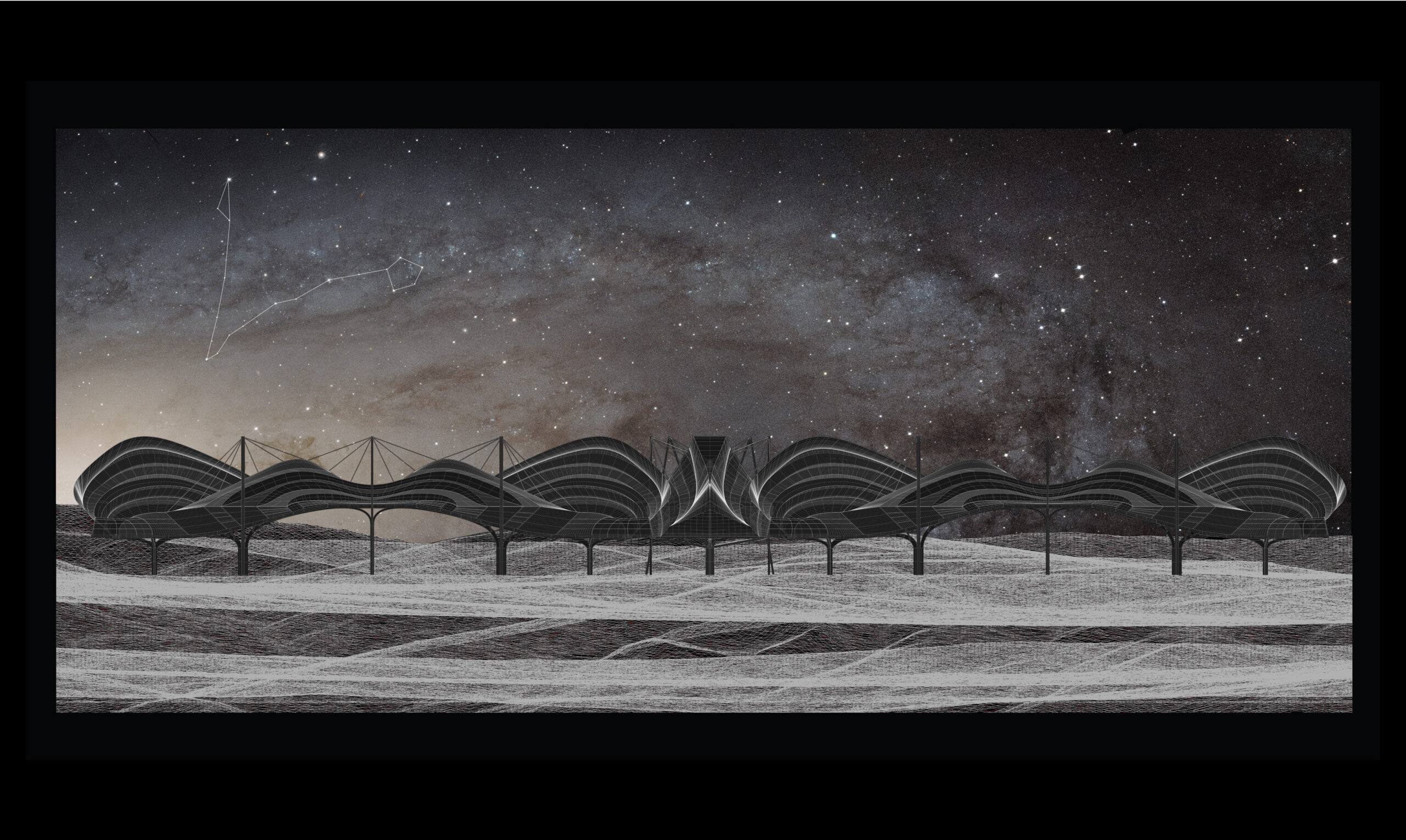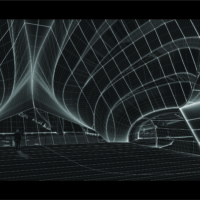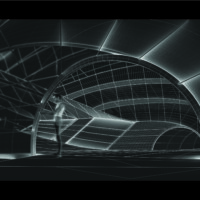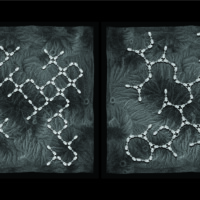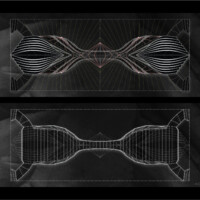A hypothetical project for future Mars colonization, Moss Vivarium proposes a neo-symbiotic relationship between humans and nature (moss). I hope to create a more sustainable future settlement typology, characterized by reciprocity between humans and plants. Moss, a nomadic life form, propagates through spore dispersal; this operation is taken as a model for settlement expansion. The neo-symbiotic logic of humans and moss interactions informs the formal, spatial, and structural characteristics of the settlement. In this ideal urban model, I argue a plant-driven relationship is a new source of spatial dynamism, facilitating communication, coevolution, cohabitation, and morphogenesis.
The Moss Vivarium settlement consists of two identical tensile shell units connected by an elevated corridor, with a total span of 50m. Together, they form a super unit for the urban settlement. Eventually, by connecting multiple super units using the shared corridor, the settlement will gradually grow into two urban patterns, including a linear grid, and a spontaneous freeform pattern. Similar to the suspended structure of the moss colony, the settlement is only supported by a few anchor structures, which minimized the contact with the ground. The immediate connection between super units also creates a continuous and elevated platform for the settlement, making a lightweight urban fabric floating on top of the ground.
Structurally speaking, the unit consists of five structural languages and six sectional profiles. The structural languages include arches, beams, frames, platforms, and cables. The structural profiles and hierarchical relationships change according to the size of the space. In terms of facade, it consists of two materials, flexible translucent membrane and glazing. Together, they serve as the skin of the unit, attached to the structural frame and supported by the cables. Eventually, considering the environmental condition of the site, constructiontion efficiency and flexibility became crucial to my design. For this reason, most of the building components will be fabricated on-site using a 3D printing robot and assembled using a mobile crane and manual labor.
Lastly, a good design will never end or be complete. Instead, it always stays incomplete. It is because incompleteness means possibility, and more importantly, it means the never-ending process of improvement. And I will call this process the “symbiosis of design thinking.”


